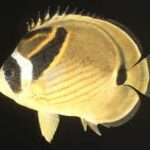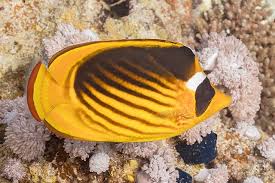Introduction: The Resilient Nature of White Cats in Adapting to Climate Variations

White cats, renowned for their elegant appearance, showcase remarkable adaptability to diverse climatic conditions. This article explores the innate abilities of white cats to thrive in various climates, shedding light on how their resilience allows them to navigate and embrace different environmental challenges.
**1. *Natural Insulation in Cold Climates*
Key Point: The thick, luxurious fur of white cats serves as natural insulation, making them well-suited for colder climates.
Highlights:
- Pristine White Coats: The pristine white coats of these felines not only contribute to their aesthetic appeal but also reflect sunlight, preventing excessive heat absorption and providing insulation in colder temperatures.
- Winter Comfort: White cats often display a preference for cozy spots during colder seasons, utilizing their fur to regulate body temperature and stay warm.
**2. *Sun Protection in Warmer Climates*
Key Point: White cats have mechanisms for managing heat and sun exposure, enhancing their comfort in warmer climates.
Highlights:
- Cooling Properties: The white fur of these cats reflects sunlight, minimizing heat absorption and offering a degree of natural cooling. They may seek shaded areas during the hottest parts of the day.
- Limited Sunburn Risk: While white cats can still experience sunburn, their light-colored fur reduces the risk compared to darker-coated cats. Outdoor access should be monitored to prevent excessive sun exposure.
**3. *Seasonal Shedding Patterns*
Key Point: White cats may exhibit seasonal shedding patterns, adapting their coats to the changing climate.
Highlights:
- Thicker Coats in Winter: In preparation for colder months, white cats might develop thicker fur to provide additional warmth. Regular grooming during this period helps manage shedding and prevents matting.
- Lighter Coats in Summer: As temperatures rise, white cats may shed excess fur, resulting in a lighter coat that facilitates better heat dissipation.
**4. *Indoor Adaptations for Extreme Climates*
Key Point: In extreme climates, white cats may thrive indoors, where temperature and environmental conditions can be controlled.
Highlights:
- Temperature-Controlled Environments: In regions with extreme temperatures, providing an indoor environment allows white cats to enjoy consistent temperatures and protection from harsh weather conditions.
- Interactive Play: Engaging white cats in interactive play and providing stimulating toys indoors helps them expend energy while avoiding weather-related stress.
**5. *Hydration Needs in Various Climates*
Key Point: White cats, like all felines, have hydration needs that should be addressed, especially in climates that may affect their water intake.
Highlights:
- Fresh Water Availability: Ensure access to fresh water at all times, as climate variations may influence a white cat’s hydration requirements. This is crucial for overall health and well-being.
- Monitoring Signs of Dehydration: Be vigilant for signs of dehydration, such as lethargy or decreased appetite, and consult with a veterinarian if concerns arise.
**6. *Adaptation to Humidity Levels*
Key Point: White cats exhibit resilience in adapting to humidity levels, with their fur providing a level of protection.
Highlights:
- Reduced Heat Retention: The reflective nature of their white fur helps reduce heat retention, offering some relief in humid conditions. However, providing shaded areas and proper ventilation remains essential.
- Grooming Practices: Regular grooming is crucial in humid climates to prevent matting and discomfort. Brushing helps remove excess fur and promotes air circulation around the skin.
**7. *Health Monitoring in Extreme Climates*
Key Point: Monitoring the health of white cats in extreme climates involves being attentive to signs of discomfort or stress.
Highlights:
- Behavioral Observations: Pay attention to changes in behavior, eating habits, or activity levels that may indicate discomfort related to climatic conditions.
- Consultation with a Veterinarian: If you have concerns about how your white cat is adapting to specific climate conditions, consult with a veterinarian for tailored advice and care recommendations.
Conclusion: White Cats, Masters of Adaptation
In conclusion, white cats stand out not only for their aesthetic beauty but also for their remarkable adaptability to varied climatic conditions. From natural insulation in cold climates to sun protection in warmer regions, these feline companions showcase resilience and intelligence in navigating their environments. By understanding and addressing their unique needs, cat owners can ensure that their white feline friends not only adapt but thrive in any climate, contributing to a healthy, happy, and content life.









